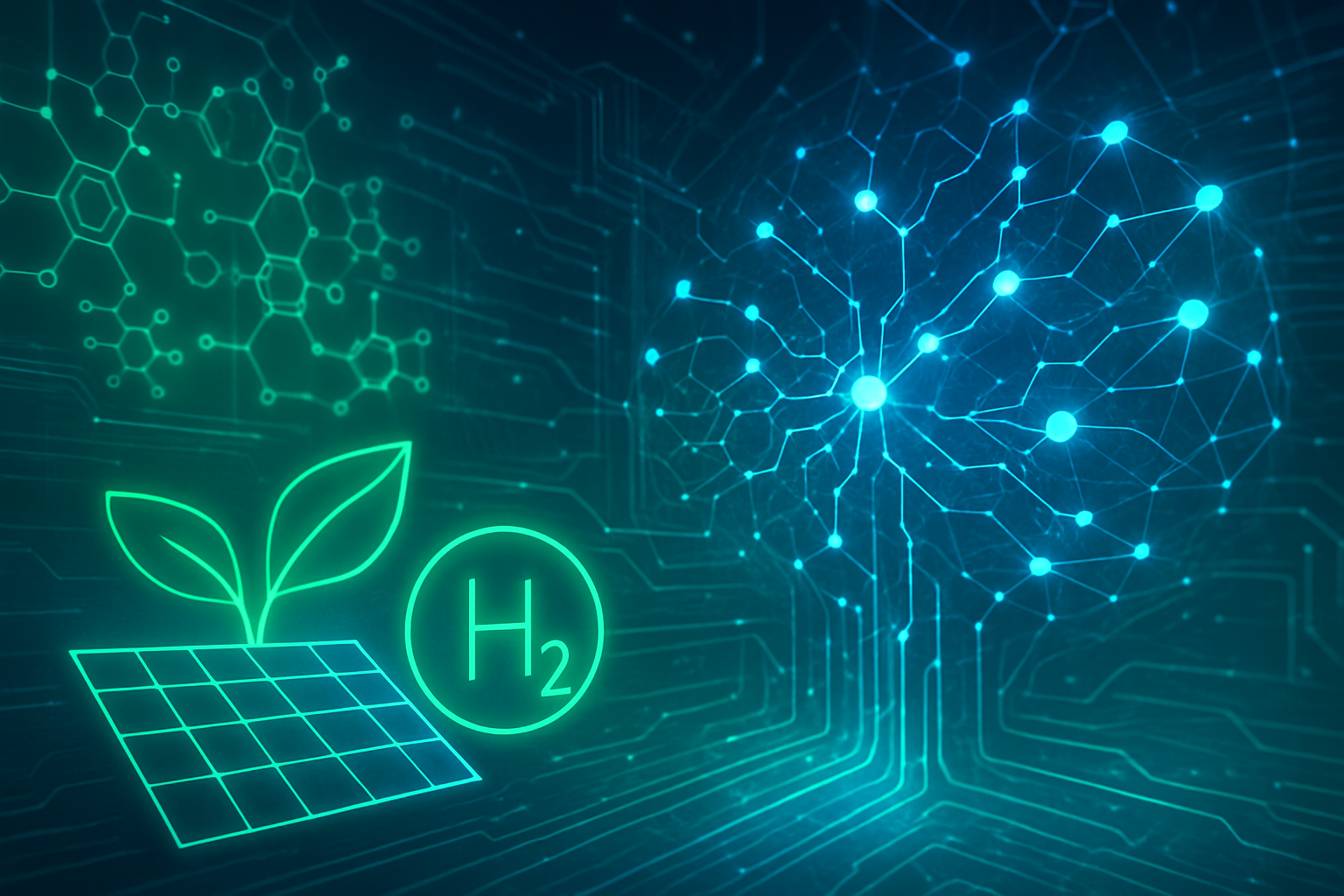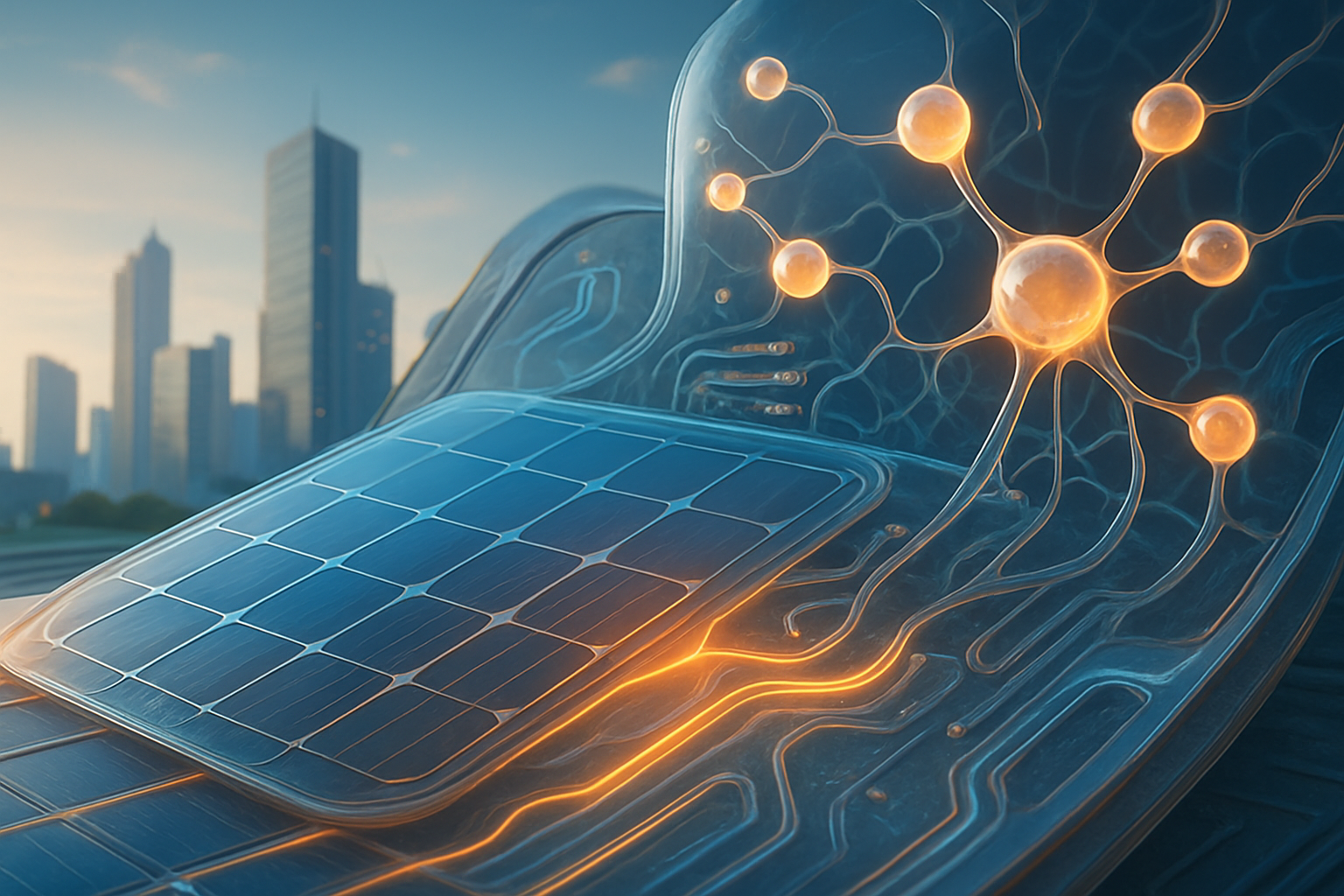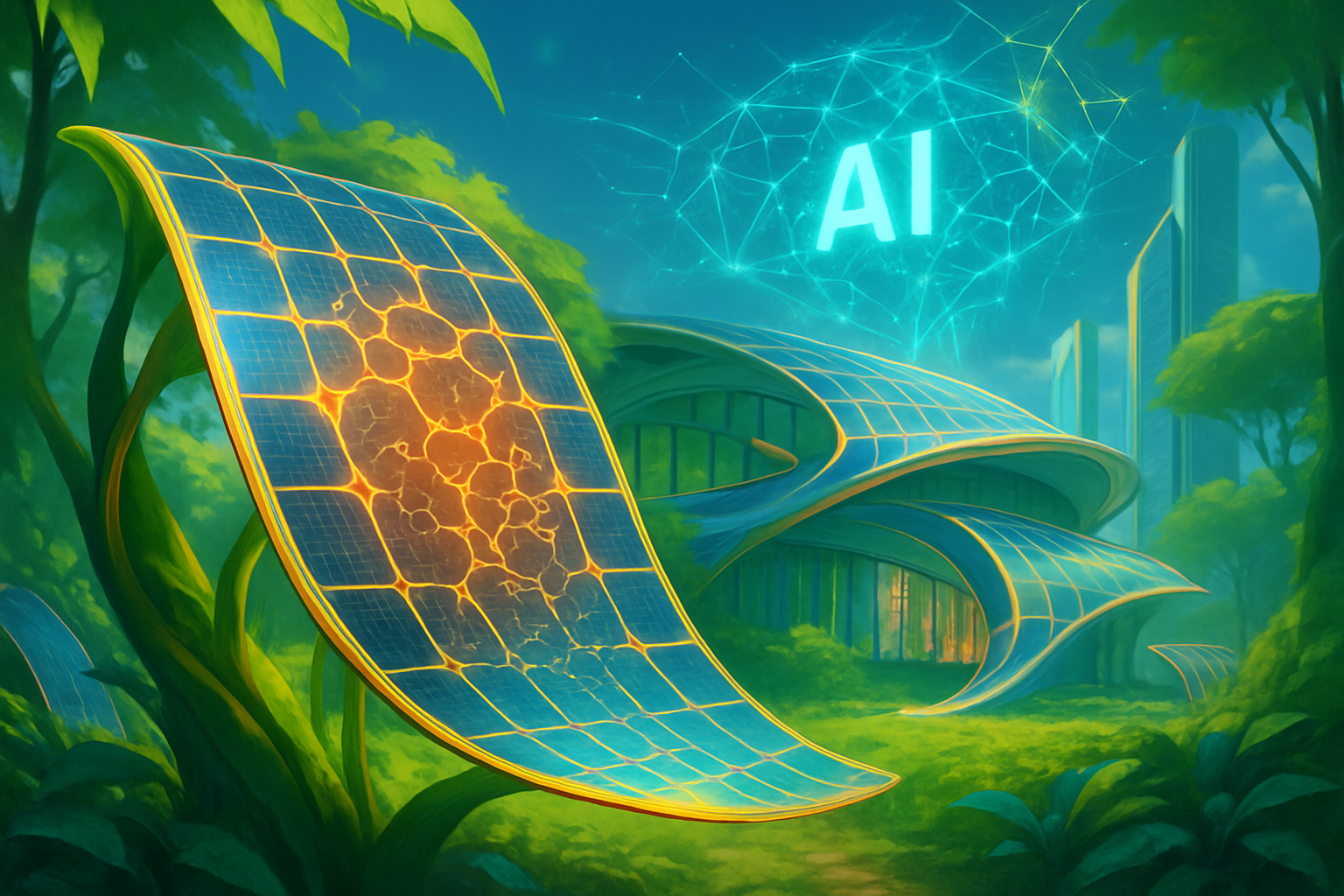Emerging semiconductor technologies like organic materials, halide perovskites, and quantum dots are revolutionizing the field of photodetectors, offering unprecedented capabilities that are poised to profoundly impact artificial intelligence (AI) and a wide array of advanced technologies. These novel materials surpass traditional inorganic semiconductors by offering enhanced flexibility, tunability, cost-effectiveness, and superior performance, opening doors to smarter, more integrated, and efficient systems. This paradigm shift in sensing hardware is not merely an incremental improvement but a foundational change, promising to unlock new frontiers in AI applications, from advanced imaging and neuromorphic computing to ubiquitous sensing in smart environments and wearable health tech. The advancements in these materials are setting the stage for a new era of AI hardware, characterized by efficiency, adaptability, and pervasive integration.
Technical Deep Dive: Redefining Sensory Input for AI
The breakthroughs across organic semiconductors, halide perovskites, and quantum dots represent a significant departure from conventional silicon-based photodetectors, addressing long-standing limitations in flexibility, spectral tunability, and manufacturing costs.
Organic Photodetectors (OPDs): Recent innovations in OPDs highlight their low production cost, ease of processing, and capacity for large-area fabrication, making them ideal for flexible electronics. Their inherent mechanical flexibility and tunable spectral response, ranging from ultraviolet (UV) to mid-infrared (mid-IR), are critical advantages. Key advancements include flexible organic photodetectors (FOPDs) for wearable electronics and photomultiplication-type organic photodetectors (PM-OPDs), which significantly enhance sensitivity for weak light signals. Narrowband OPDs are also being developed for precise color detection and spectrally-selective sensing, with new infrared OPDs even outperforming conventional inorganic detectors across a broad range of wavelengths at a fraction of the cost. This contrasts sharply with the rigidity and higher manufacturing complexity of traditional inorganic semiconductors, enabling lightweight, biocompatible, and cost-effective solutions essential for the Internet of Things (IoT) and pervasive computing. Initial reactions from the AI research community suggest that OPDs are crucial for developing "Green AI" hardware, emphasizing earth-abundant compositions and low-energy manufacturing processes.
Halide Perovskite Photodetectors (HPPDs): HPPDs are gaining immense attention due to their outstanding optoelectronic properties, including high light absorption coefficients, long charge carrier diffusion lengths, and intense photoluminescence. Recent progress has led to improved responsivity, detectivity, noise equivalent power, linear dynamic range, and response speed. Their tunable band gaps and solution processability allow for the fabrication of low-cost, large-area devices. Advancements span various material dimensions (0D, 1D, 2D, and 3D perovskites), and researchers are developing self-powered HPPDs, extending their detection range from UV-visible-near-infrared (UV-vis-NIR) to X-ray and gamma photons. Enhanced stability and the use of low-toxicity materials are also significant areas of focus. Unlike traditional inorganic materials, low-dimensional perovskites are particularly significant as they help overcome challenges such as current-voltage hysteresis, unreliable performance, and instability often found in conventional 3D halide perovskite photodetectors. Experts view perovskites as having "great potential for future artificial intelligence" applications, particularly in developing artificial photonic synapses for next-generation neuromorphic computing, which merges data transmission and storage.
Quantum Dot (QD) Photodetectors: Colloidal quantum dots are highly promising due to their tunable band gaps, cost-effective manufacturing, and ease of processing. They exhibit high absorption coefficients, excellent quantum yields, and the potential for multiple-exciton generation. Significant advancements include infrared photodetectors capable of detecting short-wave, mid-wave, and long-wave infrared (SWIR, MWIR, LWIR) light, with detection limits extending up to an impressive 18 µm using HgTe CQDs. Techniques like ligand exchange and ionic doping are being employed to improve carrier mobility and passivate defects. Wide-spectrum photodetectors (400-2600 nm) have been achieved with PbSe CQDs, and hybrid photodetectors combining QDs with graphene show superior speed, quantum efficiency, and dynamic range. Lead sulfide (PbS) QDs, in particular, offer broad wavelength tunability and are being used to create hybrid QD-Si NIR/SWIR image sensors. QDs are vital for overcoming the limitations of silicon for near-infrared and short-wave infrared sensing, revolutionizing diagnostic sensitivity. The AI research community is actively integrating machine learning and other AI techniques to optimize QD research, synthesis, and applications, recognizing their role in developing ultra-low-power AI hardware and neuromorphic computing.
Corporate Race: Companies Poised to Lead the AI Sensing Revolution
The advancements in emerging photodetector technologies are driving a paradigm shift in AI hardware, leading to significant competitive implications for major players and opening new avenues for specialized companies.
Companies specializing in Organic Photodetectors (OPDs), such as Isorg (private company) and Raynergy Tek (private company), are at the forefront of developing flexible, low-cost SWIR technology for applications ranging from biometric authentication in consumer electronics to healthcare. Their focus on printable, large-area sensors positions them to disrupt markets traditionally dominated by expensive inorganic alternatives.
In the realm of Halide Perovskite Photodetectors, academic and industrial research groups are intensely focused on enhancing stability and developing low-toxicity materials. While direct publicly traded companies are still emerging as primary manufacturers, the underlying research will significantly benefit AI companies looking for high-performance, cost-effective vision systems.
Quantum Dot (QD) Photodetectors are attracting substantial investment from both established tech giants and specialized material science companies. IQE plc (AIM: IQE) is partnering with Quintessent Inc. (private company) to develop quantum dot laser (QDL) technology for high-bandwidth, low-latency optical interconnects in AI data centers, a critical component for scaling AI infrastructure. Other key players include Nanosys (private company), known for its high-performance nanostructures, Nanoco Group PLC (LSE: NANO) for cadmium-free quantum dots, and Quantum Materials Corp. (OTC: QTMM). Major consumer electronics companies like Apple (NASDAQ: AAPL) have shown interest through acquisitions (e.g., InVisage Technologies), signaling potential integration of QD-based image sensors into their devices for enhanced camera and AR/VR capabilities. Samsung Electronics Co., Ltd. (KRX: 005930) and LG Display Co., LTD. (KRX: 034220) are already significant players in the QD display market and are well-positioned to leverage their expertise for photodetector applications.
Major AI labs and tech giants are strategically integrating these advancements. NVIDIA (NASDAQ: NVDA) is making a groundbreaking shift to silicon photonics and Co-Packaged Optics (CPO) by 2026, replacing electrical signals with light for high-speed interconnectivity in AI clusters, directly leveraging the principles enabled by advanced photodetectors. Intel (NASDAQ: INTC) is also heavily investing in silicon photonics for AI data centers. Microsoft (NASDAQ: MSFT) is exploring entirely new paradigms with its Analog Optical Computer (AOC), projected to be significantly more energy-efficient than GPUs for specific AI workloads. Google (Alphabet Inc. – NASDAQ: GOOGL), with its extensive AI research and custom accelerators (TPUs), will undoubtedly leverage these technologies for enhanced AI hardware and sensing. The competitive landscape will see increased focus on optical interconnects, novel sensing capabilities, and energy-efficient optical computing, driving significant disruption and strategic realignments across the AI industry.
Wider Significance: A New Era for AI Perception and Computation
The development of these emerging photodetector technologies marks a crucial inflection point, positioning them as fundamental enablers for the next wave of AI breakthroughs. Their wider significance in the AI landscape is multifaceted, touching upon enhanced computational efficiency, novel sensing modalities, and a self-reinforcing cycle of AI-driven material discovery.
These advancements directly address the "power wall" and "memory wall" that increasingly challenge the scalability of large-scale AI models. Photonics, facilitated by efficient photodetectors, offers significantly higher bandwidth, lower latency, and greater energy efficiency compared to traditional electronic data transfer. This is particularly vital for linear algebra operations, the backbone of machine learning, enabling faster training and inference of complex AI models with a reduced energy footprint. TDK's "Spin Photo Detector," for instance, has demonstrated data transmission speeds over 10 times faster than conventional semiconductor photodetectors, consuming less power, which is critical for next-generation AI.
Beyond raw computational power, these materials unlock advanced sensing capabilities. Organic photodetectors, with their flexibility and spectral tunability, will enable AI in new form factors like smart textiles and wearables, providing continuous, context-rich data for health monitoring and pervasive computing. Halide perovskites offer high-performance, low-cost imaging for computer vision and optical communication, while quantum dots revolutionize near-infrared (NIR) and short-wave infrared (SWIR) sensing, allowing AI systems to "see" through challenging conditions like fog and dust, crucial for autonomous vehicles and advanced medical diagnostics. This expanded, higher-quality data input will fuel the development of more robust and versatile AI.
Moreover, these technologies are pivotal for the evolution of AI hardware itself. Quantum dots and perovskites are highly promising for neuromorphic computing, mimicking biological neural networks for ultra-low-power, energy-efficient AI. This move towards brain-inspired architectures represents a fundamental shift in how AI can process information, potentially leading to more adaptive and learning-capable systems.
However, challenges remain. Stability and longevity are persistent concerns for organic and perovskite materials, which are susceptible to environmental degradation. Toxicity, particularly with lead-based perovskites and some quantum dots, necessitates the development of high-performance, non-toxic alternatives. Scalability and consistent manufacturing at an industrial level also pose hurdles. Despite these, the current era presents a unique advantage: AI is not just benefiting from these hardware advancements but is also actively accelerating their development. AI-driven design, simulation, and autonomous experimentation for optimizing material properties and synthesis conditions represent a meta-breakthrough, drastically reducing the time and cost of bringing these innovations to market. This synergy between AI and materials science is unprecedented, setting a new trajectory for technological progress.
Future Horizons: What's Next for AI and Advanced Photodetectors
The trajectory of emerging photodetector technologies for AI points towards a future characterized by deeper integration, enhanced performance, and ubiquitous sensing. Both near-term and long-term developments promise to push the boundaries of what AI can perceive and process.
In the near term, we can expect significant strides in addressing the stability and toxicity issues plaguing halide perovskites and certain quantum dots. Research will intensify on developing lead-free perovskites and non-toxic QDs, coupled with advanced encapsulation techniques to improve their longevity in real-world applications. Organic photodetectors will see continued improvements in charge transport and exciton binding energy, making them more competitive for various sensing tasks. The monolithic integration of quantum dots directly onto silicon Read-Out Integrated Circuits (ROICs) will become more commonplace, leading to high-resolution, small-pixel NIR/SWIR sensors that bypass the complexities and costs of traditional heterogeneous integration.
Long-term developments envision a future where these photodetectors are foundational to next-generation AI hardware. Neuromorphic computing, leveraging perovskite and quantum dot-based artificial photonic synapses, will become more sophisticated, enabling ultra-low-power, brain-inspired AI systems with enhanced learning and adaptability. The tunable nature of these materials will facilitate the widespread adoption of multispectral and hyperspectral imaging, providing AI with an unprecedented depth of visual information for applications in remote sensing, medical diagnostics, and industrial inspection. The goal is to achieve high-performance broadband photodetectors that are self-powered, possess rapid switching speeds, and offer high responsivity, overcoming current limitations in carrier mobility and dark currents.
Potential applications on the horizon are vast. Beyond current uses in advanced imaging for autonomous vehicles and AR/VR, we will see these sensors deeply embedded in smart environments, providing real-time data for AI-driven resource management and security. Flexible and wearable organic and quantum dot photodetectors will revolutionize health monitoring, offering continuous, non-invasive tracking of vital signs and biomarkers with AI-powered diagnostics. Optical communications will benefit from high-performance perovskite and QD-based photodetectors, enabling faster and more energy-efficient data transmission for the increasingly data-hungry AI infrastructure. Experts predict that AI itself will be indispensable in this evolution, with machine learning and reinforcement learning optimizing material synthesis, defect engineering, and device fabrication in self-driving laboratories, accelerating the entire innovation cycle. The demand for high-performance SWIR sensing in AI and machine vision will drive significant growth, as AI's full potential can only be realized by feeding it with higher quality, "invisible" data.
Comprehensive Wrap-up: A New Dawn for AI Perception
The landscape of AI is on the cusp of a profound transformation, driven significantly by the advancements in emerging semiconductor technologies for photodetectors. Organic semiconductors, halide perovskites, and quantum dots are not merely incremental improvements but foundational shifts, promising to unlock unprecedented capabilities in sensing, imaging, and ultimately, intelligence. The key takeaways from these developments underscore a move towards more flexible, cost-effective, energy-efficient, and spectrally versatile sensing solutions.
The significance of these developments in AI history cannot be overstated. Just as the advent of powerful GPUs and the availability of vast datasets fueled previous AI revolutions, these advanced photodetectors are poised to enable the next wave. They address critical bottlenecks in AI hardware, particularly in overcoming the "memory wall" and energy consumption limits of current systems. By providing richer, more diverse, and higher-quality data inputs (especially in previously inaccessible spectral ranges like SWIR), these technologies will empower AI models to achieve greater understanding, context-awareness, and performance across a myriad of applications. Furthermore, their role in neuromorphic computing promises to usher in a new era of brain-inspired, ultra-low-power AI hardware.
Looking ahead, the symbiotic relationship between AI and these material sciences is a defining feature. AI is not just a beneficiary; it's an accelerator, actively optimizing the discovery, synthesis, and stabilization of these novel materials through machine learning and automated experimentation. While challenges such as material stability, toxicity, scalability, and integration complexity remain, the concerted efforts from academia and industry are rapidly addressing these hurdles.
In the coming weeks and months, watch for continued breakthroughs in material science, particularly in developing non-toxic alternatives and enhancing environmental stability for perovskites and quantum dots. Expect to see early commercial deployments of these photodetectors in specialized applications, especially in areas demanding high-performance SWIR imaging for autonomous systems and advanced medical diagnostics. The convergence of these sensing technologies with AI-driven processing at the edge will be a critical area of development, promising to make AI more pervasive, intelligent, and sustainable. The future of AI sensing is bright, literally, with light-based technologies illuminating new pathways for innovation.
This content is intended for informational purposes only and represents analysis of current AI developments.
TokenRing AI delivers enterprise-grade solutions for multi-agent AI workflow orchestration, AI-powered development tools, and seamless remote collaboration platforms.
For more information, visit https://www.tokenring.ai/.



